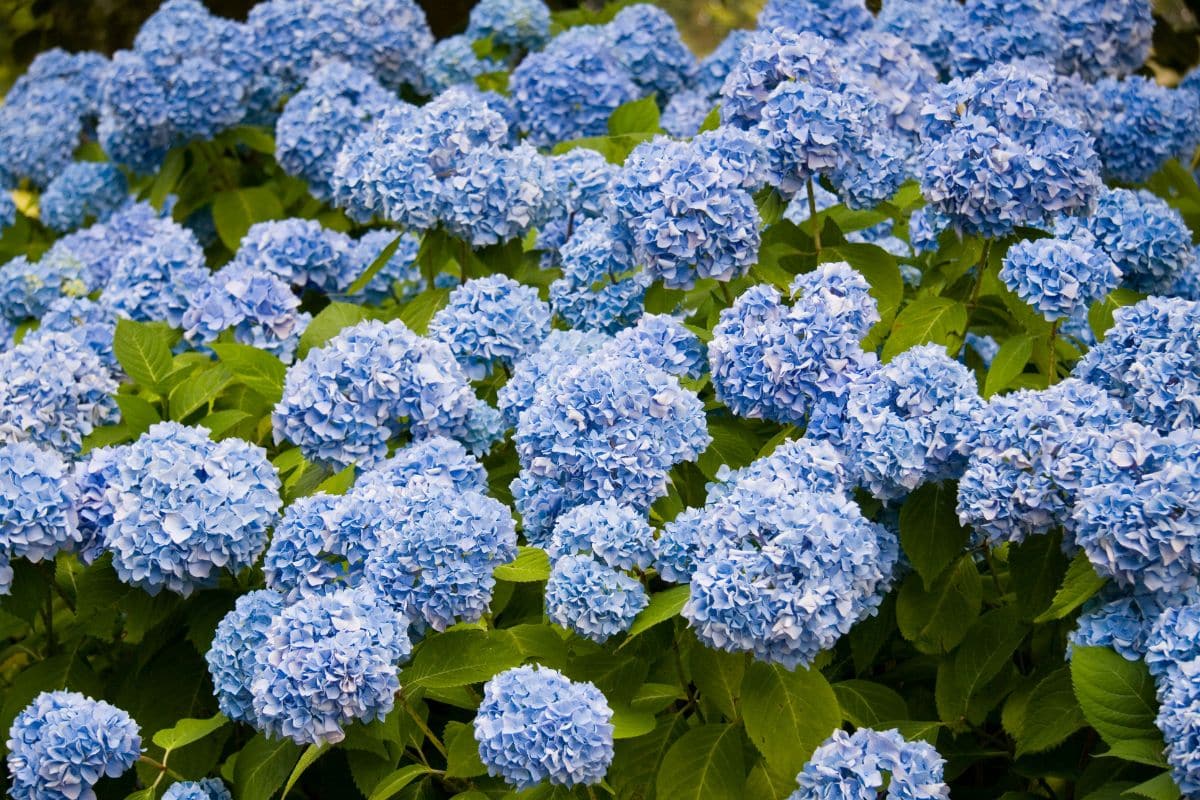Gardening enthusiasts are always on the lookout for natural ways to enhance their flowerbeds. If you’re growing hydrangeas and want to maximize their blooming potential, you might be surprised to learn that your morning coffee ritual could provide the perfect boost. **Coffee grounds contain valuable nutrients** that can transform your garden’s soil quality while specifically benefiting these beautiful flowering shrubs. Let’s explore how this kitchen waste can become garden gold for your hydrangeas.
Coffee grounds as a natural soil amendment for hydrangeas
Hydrangeas are known for their stunning blooms and their preference for acidic soil conditions. These gorgeous flowering shrubs thrive in soil with a pH between 5.0 and 6.0, making them perfect candidates for coffee ground applications. When you incorporate used coffee grounds into your soil, you’re adding a mildly acidic amendment that can help maintain the ideal growing environment for these plants.
The science behind this gardening hack is straightforward. **Coffee grounds contain approximately 2% nitrogen by volume**, along with traces of phosphorus and potassium—all essential nutrients for plant development. Beyond macronutrients, they also provide valuable organic matter that improves soil structure. As office garden enthusiasts have discovered, even small-scale applications can yield impressive results.
While coffee grounds won’t dramatically alter your soil’s pH overnight, they do contribute to a gradual improvement in soil acidity. This slow-release approach is actually beneficial, as it prevents the shock that can occur with chemical amendments. For gardeners committed to organic growing practices, coffee grounds represent an eco-friendly alternative to commercial acidifiers.
Beyond their chemical properties, coffee grounds also attract earthworms—nature’s soil engineers. These beneficial creatures incorporate the grounds deeper into the soil profile while aerating and enriching your garden beds. The resulting environment becomes ideal not just for hydrangeas but for many of your garden favorites.
How to apply coffee grounds to boost hydrangea flowering
Applying coffee grounds to your hydrangeas requires some technique to maximize benefits while avoiding potential issues. *Never apply fresh coffee grounds directly to plant roots*, as they can be too acidic and may burn delicate root systems. Instead, follow these application methods for best results:
- Mix used coffee grounds into your compost pile before application
- Create a thin mulch layer (no more than half an inch) around plants
- Incorporate grounds into the soil when planting new hydrangeas
- Brew “coffee ground tea” by steeping grounds in water for liquid fertilization
- Blend with other organic materials like eggshells for balanced nutrition
The timing of application matters significantly. Early spring offers an ideal opportunity to incorporate coffee grounds around established hydrangeas, giving them a nutrient boost just as they enter active growth. A second application in early summer can help support the development of flower buds for maximum blooming.
For gardeners with multiple hydrangea varieties, it’s worth noting that blue-flowering hydrangeas respond most dramatically to coffee ground applications. The aluminum compounds in soil become more available in acidic conditions, intensifying blue pigmentation. If you’re hoping to enhance your fall garden’s vibrant colors, this natural amendment can help you achieve richer blue tones.
When applying coffee grounds, always remember to maintain proper drainage. **Excessive applications can create a compacted layer** that prevents water movement. Mixing grounds with coarser materials like pine bark helps maintain soil porosity while still providing acidity benefits.
Additional hydrangea care practices that complement coffee grounds
While coffee grounds contribute to hydrangea health, they work best as part of a comprehensive care approach. Proper watering remains essential—hydrangeas typically require about one inch of water weekly during growing season. Installing a soaker hose delivers moisture directly to roots while keeping foliage dry, reducing disease risk.
Pruning plays a critical role in maximizing flowering. Different hydrangea varieties require specific pruning approaches. For bigleaf and oakleaf hydrangeas, remove only dead wood in early spring. Panicle and smooth hydrangeas benefit from more aggressive pruning, cutting back by one-third in late winter. *Understanding your specific hydrangea type ensures you won’t accidentally remove developing flower buds*.
Complementary soil amendments can enhance the effects of coffee grounds. Pine needles, oak leaves, and peat moss all contribute to maintaining acidic conditions. For gardeners familiar with organic growing practices, creating a balanced approach to soil amendment comes naturally.
Seasonal protection also impacts flowering success. In colder regions, hydrangeas benefit from winter protection to preserve flower buds. Apply a thick mulch layer after the ground freezes, and consider wrapping plants with burlap in exposed locations. These practices help ensure your coffee ground amendments translate into magnificent blooms the following season.
Beyond coffee grounds, hydrangeas benefit from companion planting with shade-tolerant plants like leafy greens and woodland natives. These plant communities create beneficial microclimates that support overall garden health. Just as you might use creative combinations in cooking, thoughtful plant groupings enhance garden performance.
Troubleshooting common issues when using coffee grounds
Even with proper application, gardeners occasionally encounter challenges when using coffee grounds. If you notice mold developing on your coffee ground mulch, it’s typically a sign of excessive moisture or too thick an application. Simply rake the area to increase air circulation and reduce the layer thickness.
Some gardeners worry about caffeine affecting plant growth. While coffee grounds do contain residual caffeine, the amounts are minimal in used grounds and unlikely to harm established plants. However, if you’re growing sensitive herbs like basil near your hydrangeas, monitor for any signs of stress.
Not seeing results from your coffee ground applications? **Soil testing provides valuable information** about your garden’s specific needs. Local extension offices offer affordable testing services that can help you fine-tune your amendment strategy. Sometimes hydrangeas need additional nutrients beyond what coffee grounds provide.
For gardens with very alkaline soil, coffee grounds alone may not provide sufficient acidification. In these cases, consider supplementing with elemental sulfur or aluminum sulfate for more significant pH adjustments. These products should be used cautiously and according to soil test recommendations to avoid over-correction.
As seasonal gardening practices shift throughout the year, adjust your coffee ground applications accordingly. Reduce or eliminate applications in late summer to allow plants to properly harden off before winter. This timing helps prevent late-season growth that might be vulnerable to early frosts.










